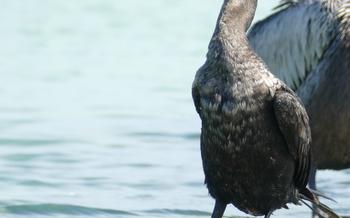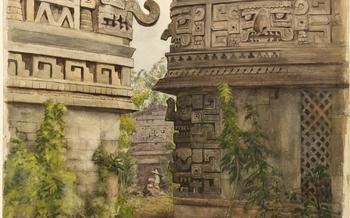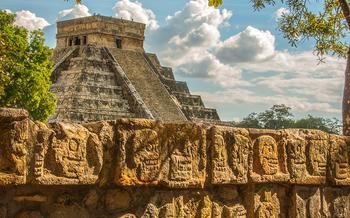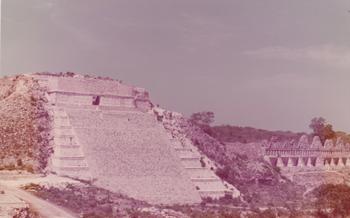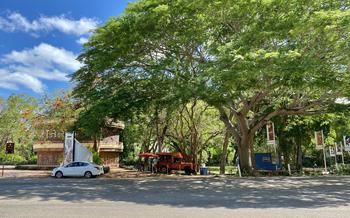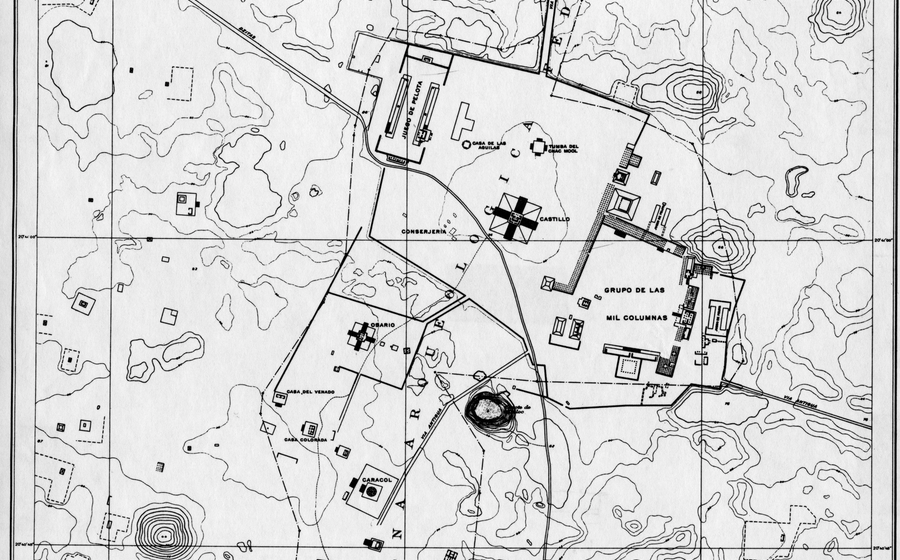
Ria Celestun Biosphere Reserve
- Ria Celestun Biosphere Reserve: A Haven for Nature Lovers
- Location and Accessibility
- History and Significance
- Flora and Fauna
- Ria Celestun National Park: A Natural Oasis
- Boat Tours and Wildlife Encounters
- Observing the Flamingos
- Discovering Ancient Mayan Ruins
- Birdwatching Opportunities:
- Exploring the Mangroves
- Camping and Overnight Stays
- Local Cuisine and Delicacies
- Insider Tip: Hidden Gems and Secret Spots
Ria Celestun Biosphere Reserve: A Haven for Nature Lovers
Within the realm of natural wonders, the Ria Celestun Biosphere Reserve stands as a testament to the boundless beauty and intricate diversity of Mexico's ecosystems. This extraordinary expanse of protected land, encompassing 81,482 hectares along the northern coast of the Yucatan Peninsula, is a sanctuary for an astonishing array of flora and fauna, inviting nature enthusiasts to immerse themselves in a realm of unspoiled wonder.
The reserve's unique geography, with its intricate network of interconnected waterways, mangroves, forests, and wetlands, creates a haven for a myriad of species. From the graceful flamingos that grace the skies to the elusive crocodiles that glide through the water, this biosphere reserve is a living tapestry of biodiversity, offering unparalleled opportunities for wildlife observation and nature exploration.
Beyond its ecological significance, the Ria Celestun Biosphere Reserve holds immense cultural and historical value. Ancient Mayan settlements once thrived within its boundaries, leaving behind a legacy of archaeological treasures that invite visitors to delve into the depths of this region's rich past. The designation of the reserve as a biosphere reserve by UNESCO in 1979 further underscores its global importance, ensuring its protection and preservation for generations to come.
Location and Accessibility
The Ria Celestun Biosphere Reserve is situated on the western coast of the Yucatan Peninsula, approximately 100 kilometers from the iconic Mayan ruins of Chichen Itza. This proximity makes it an ideal destination for travelers seeking to combine cultural exploration with a nature-filled adventure.
Reaching the reserve is relatively easy, with several transportation options available. Visitors can rent a car from Cancun or Merida, the two major cities in the region, and enjoy a scenic drive through the lush landscapes of Yucatan. Alternatively, organized tours and excursions are offered by local tour operators, providing a hassle-free way to visit the reserve and learn about its unique ecosystem.
History and Significance
The Ria Celestun Biosphere Reserve boasts a rich history that dates back to ancient times. Archaeological evidence suggests that the area was inhabited by the Maya civilization as early as the Preclassic period (2500 BC - 250 AD). Numerous Mayan settlements have been discovered within the reserve, including the ruins of temples, pyramids, and ceremonial centers. These archaeological discoveries provide valuable insights into the cultural heritage and way of life of the ancient Maya.
In the colonial era, the Ria Celestun region came under Spanish rule. During this period, the area was primarily used for agriculture and fishing. However, it was not until the 20th century that the region's unique ecological significance began to be recognized. In 1979, the Mexican government designated the area as a biosphere reserve in order to protect its fragile ecosystem and rich biodiversity. This designation has played a crucial role in preserving the reserve's natural beauty and ecological integrity.
Flora and Fauna
The Ria Celestun Biosphere Reserve is a haven for biodiversity, boasting a remarkable array of plant and animal species. The reserve's diverse flora includes mangroves, tropical forests, and wetlands, each supporting a unique assemblage of organisms. Among the notable plant species found here are the red mangrove, the black mangrove, and the buttonwood tree, all of which play vital roles in the ecosystem.
The reserve's wildlife is equally impressive, with over 300 bird species recorded, including the American flamingo, the roseate spoonbill, and the wood stork. These magnificent birds migrate to the reserve in large numbers during the winter months, creating a spectacle that draws birdwatchers from around the world. The reserve is also home to a variety of reptiles, amphibians, and mammals, including the American crocodile, the green iguana, and the howler monkey.
Ria Celestun National Park: A Natural Oasis
Within the Ria Celestun Biosphere Reserve lies the enchanting Ria Celestun National Park, a captivating haven of natural wonders. Designated as a protected area, the park encompasses a diverse array of ecosystems, including mangroves, forests, and wetlands. As you step into this pristine sanctuary, you'll be greeted by a tapestry of vibrant colors and a symphony of sounds from the abundant wildlife.
Explore the park's lush mangrove forests, where intricate root systems weave a fascinating labyrinth of life. Discover the secrets of the ancient forests, home to towering trees and a symphony of bird songs. Wander through the tranquil wetlands, where the gentle ripples of the water create a mesmerizing spectacle.
At the heart of the park lies a well-equipped visitor center, providing valuable insights into the reserve's rich biodiversity and conservation efforts. Take advantage of the informative exhibits, knowledgeable guides, and interactive programs to deepen your understanding of this remarkable ecosystem.
Join a guided tour and embark on an unforgettable journey through the park's diverse landscapes. Expert naturalists will lead you through the mangroves, forests, and wetlands, revealing the hidden treasures and fascinating stories that lie within. Whether you're a nature enthusiast, an avid birdwatcher, or simply seeking a tranquil escape, Ria Celestun National Park promises an unforgettable experience.
Boat Tours and Wildlife Encounters
Embark on an unforgettable journey through the Ria Celestun Biosphere Reserve by exploring its diverse habitats from the perspective of a boat. Glide along the tranquil waters, surrounded by lush mangrove forests, and witness the reserve's abundant wildlife in their natural environment. Spot majestic crocodiles basking in the sun, graceful flamingos wading through the shallows, and a myriad of other bird species flitting among the mangroves.
As your boat navigates through the reserve's intricate network of channels, keep your eyes peeled for the elusive manatees, gently swimming alongside your vessel. Capture breathtaking photographs of the stunning landscapes, where vibrant greens and azure blues blend seamlessly to create a mesmerizing backdrop for your wildlife adventure.
Join one of the many local tour operators who offer guided boat tours, ensuring you maximize your wildlife encounters and learn about the reserve's unique ecosystem. Let the experienced guides share their knowledge and passion for conservation as you delve deeper into the heart of this extraordinary biosphere reserve.
Observing the Flamingos
The Ria Celestun Biosphere Reserve is a haven for birdwatchers, particularly during the winter months when it hosts the largest concentration of flamingos in North America. These majestic birds migrate from the northern regions to the warmer climate of the Yucatan Peninsula, transforming the reserve into a vibrant spectacle of pink and red.
Flamingos are renowned for their unique feeding and nesting habits. They wade in the shallow waters of the reserve, using their specialized beaks to filter-feed on small crustaceans and algae. The reserve provides an abundance of food and a safe environment for flamingos to raise their young.
The best time to observe these magnificent creatures is from November to March, when they congregate in the reserve in their thousands. Visitors can embark on guided boat tours that take them through the mangroves and canals, offering up-close encounters with these graceful birds. The tours provide an opportunity to learn about the flamingos' behavior, migration patterns, and conservation efforts aimed at protecting their habitat.
Whether you are an experienced birdwatcher or simply someone who appreciates the beauty of nature, witnessing the spectacle of the flamingos in the Ria Celestun Biosphere Reserve is an unforgettable experience that will leave you in awe.
Discovering Ancient Mayan Ruins
The Ria Celestun Biosphere Reserve is home to several ancient Mayan ruins, offering a glimpse into the rich history and culture of the region. These archaeological sites, nestled amidst the lush vegetation and waterways, hold significant historical and cultural value. Visitors can explore temples, pyramids, and ceremonial centers that once served as religious, administrative, and social hubs for the ancient Maya civilization. Guided tours are available to provide insights into the history, architecture, and significance of these ruins, allowing visitors to delve deeper into the fascinating world of the Maya. Exploring these ancient sites offers a unique opportunity to connect with the past and gain a deeper appreciation for the cultural heritage of the region.
Birdwatching Opportunities:
The Ria Celestun Biosphere Reserve is a haven for bird enthusiasts, with a diverse array of species inhabiting its various ecosystems. Migratory birds, including waterfowl, raptors, and songbirds, find refuge in the reserve during their seasonal migrations. Waterfowl, such as ducks, geese, and herons, can be spotted in the wetlands, while raptors, including hawks, falcons, and eagles, soar above the forests. Birdwatching trails and observation points have been established throughout the reserve, providing visitors with opportunities to observe these magnificent creatures in their natural habitat. Some of the reserve's highlights include the American flamingo, with its vibrant pink plumage, the endangered roseate spoonbill, and the elusive Yucatan jay. With its rich birdlife and diverse habitats, the Ria Celestun Biosphere Reserve offers birdwatchers an unforgettable experience.
Exploring the Mangroves
The Ria Celestun Biosphere Reserve is home to extensive mangrove forests, a vital ecosystem that supports a diverse array of plant and animal life. These intricate networks of trees and waterways provide a habitat for numerous species, including birds, fish, and crustaceans. Exploring the mangroves is a unique and rewarding experience, offering a glimpse into the wonders of this coastal ecosystem.
Guided mangrove tours are available, allowing visitors to venture deep into the forests and learn about the importance of these remarkable trees. These tours typically take place on small boats or kayaks, providing an up-close view of the mangroves and their inhabitants. Visitors can observe the intricate root systems that help stabilize the shoreline, as well as the diverse plant and animal species that call the mangroves home.
Mangrove forests play a crucial role in coastal protection, acting as a buffer against storms and erosion. They also serve as a natural water filter, helping to improve water quality and provide a breeding ground for various fish and shellfish species. By exploring the mangroves, visitors can gain a deeper appreciation for this unique and essential ecosystem.
Camping and Overnight Stays
The Ria Celestun Biosphere Reserve offers a unique opportunity for visitors to immerse themselves in nature by camping overnight within the reserve's designated camping areas. These areas are equipped with basic facilities and amenities, allowing campers to experience the tranquility and beauty of the reserve after the day-trippers have departed.
Imagine waking up to the sound of birdsong and the gentle rustling of the mangroves, surrounded by the pristine natural beauty of the reserve. Spend your evenings gazing at the stars, free from light pollution, and enjoy the tranquility of your surroundings. Camping in the Ria Celestun Biosphere Reserve is an unforgettable experience for nature enthusiasts and outdoor adventurers alike.
Remember to book your camping spot in advance, especially during peak season, to secure your place in this natural paradise. Camping fees are minimal and contribute to the conservation efforts of the reserve.
Local Cuisine and Delicacies
Indulge your taste buds with the culinary delights of the region. Fresh seafood, caught daily from the Gulf of Mexico, is a staple in local restaurants. Savor mouthwatering dishes like ceviche, grilled lobster, and shrimp tacos. Don't miss trying "panuchos," a Yucatecan specialty consisting of handmade tortillas filled with black beans and topped with shredded turkey or cochinita pibil, a slow-roasted pork dish.
For a truly authentic experience, venture into the nearby towns and villages to sample traditional Mayan cuisine. Seek out local markets and food stalls to try "salbutes," another Mayan delicacy made with fried tortillas topped with shredded turkey, lettuce, tomato, and avocado.
Whether you prefer fine dining or casual eateries, you'll find plenty of options to satisfy your cravings. Immerse yourself in the vibrant food culture of the region and discover the unique flavors that make this part of Mexico so special.
Insider Tip: Hidden Gems and Secret Spots
Venture beyond the popular tourist spots and discover the hidden gems of the Ria Celestun Biosphere Reserve. Explore the tranquil beaches of San Bruno, where you can bask in the sun and enjoy the serene atmosphere. For a unique experience, embark on a guided night tour to witness the bioluminescent plankton illuminating the waters of the Celestun lagoon.
Uncover the secrets of the ancient Mayan city of Xcambó, located within the reserve. This archaeological site features impressive ruins, including a pyramid, a ball court, and various ceremonial structures. With fewer tourists, you can explore this historical treasure in peace and tranquility.
To truly immerse yourself in the local culture, visit the traditional fishing village of Celestun. Stroll through the colorful streets, interact with the friendly locals, and savor the delicious seafood dishes at the local restaurants. Enjoy a leisurely boat ride through the mangroves, where you might encounter crocodiles, turtles, and a variety of bird species.
Remember, the most rewarding experiences often lie off the beaten path. Embracing the insider tips will allow you to discover the hidden wonders of the Ria Celestun Biosphere Reserve and create lasting memories.
